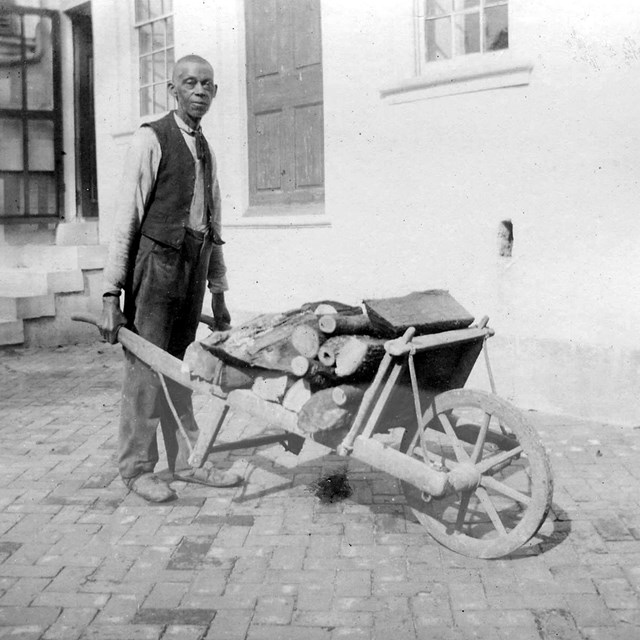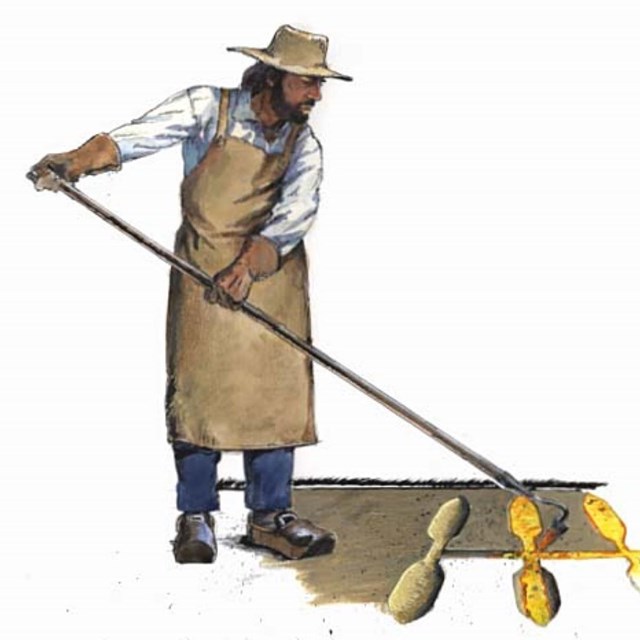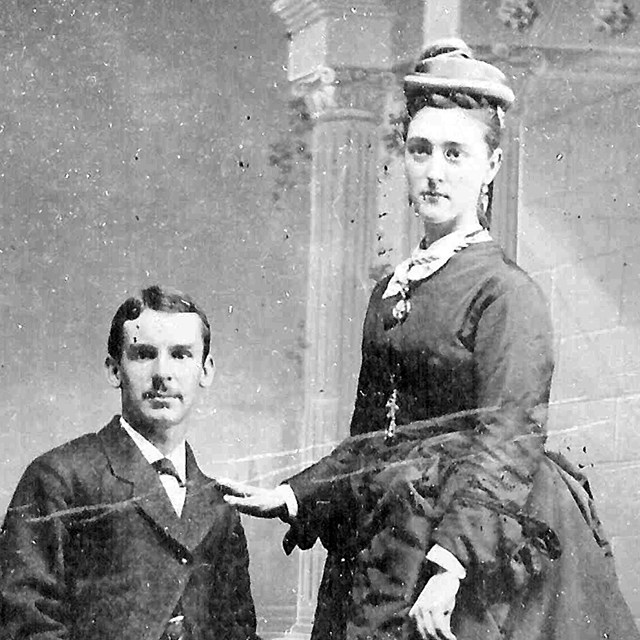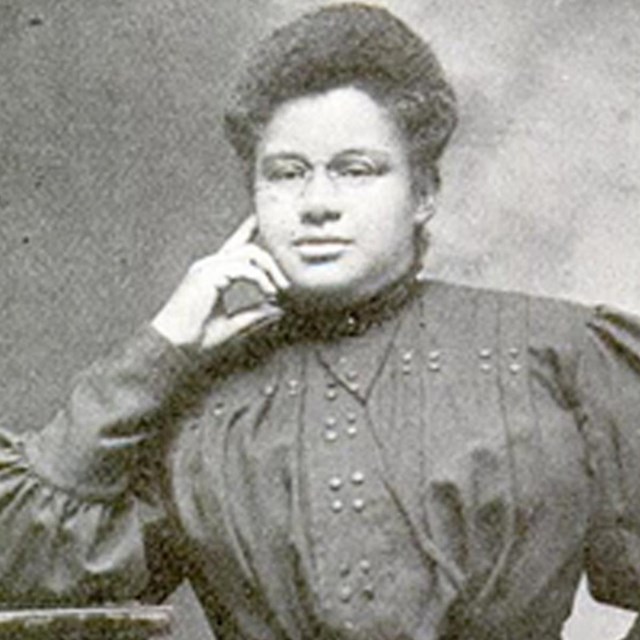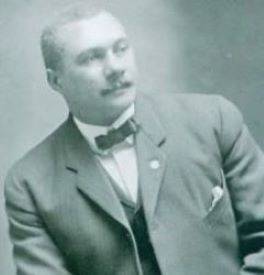
NPS Hampton National Historic Site (NHS) can best be understood through the story of its people—those who labored across centuries and the seven generations of the Ridgely family who gained wealth, status, and influence from that labor. Visitors can engage with the personal stories of the communities that toiled at the ironworks, in the fields, gardens and orchards, on the docks and aboard ships, and inside the mansion, making Hampton an example of the story of America. 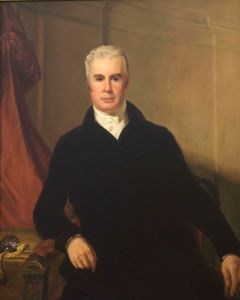
NPS A visit to Hampton NHS allows visitors to travel back in time to experience snapshots of American history. Without the wide range of people and their contributions, Hampton would not have existed at all. By learning about all these individuals, visitors can connect all aspects of the site, from the buildings to the grounds to the experiences across time of enslaved, indentured, and free people. Discover more about how their lives intertwined and how their goals and hardships played out against the backdrop of America’s development as the nation struggled to define its own concept of freedom.
|
Last updated: September 5, 2024

